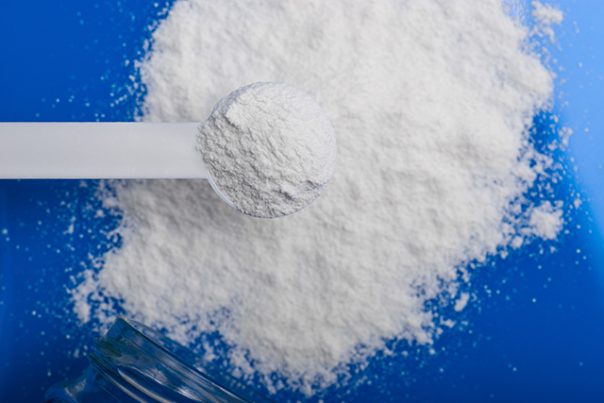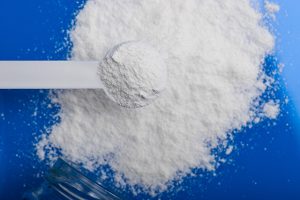
Thiabendazole sources, health risks
Saturday, October 28, 2017 by Jhoanna Robinson
http://www.naturalpedia.com/thiabendazole-sources-health-risks.html

Thiabendazole is a benzimidazole derivative that has antihelminthic properties, which means it can get rid of parasites, such as worms, in the body. It inhibits the activities of the helminth-specific mitochondrial enzyme fumarate reductase, thereby stopping the citric acid cycle or Krebs cycle, which is the system used by all aerobic organisms to release stored energy through the oxidation of acetyl coenzyme A (acetyl-CoA) derived from carbohydrates, fats, and proteins into carbon dioxide.
Thiabendazole also blocks mitochondrial respiration and the subsequent production of adenosine triphosphate (ATP), leading to the helminth’s downfall. It is most used in the treatment of diseases caused by intestinal pinworms, hookworms, and roundworms. It also has antifungal properties.
Thiabendazole appears as a white, odorless, and tasteless powder that has its sublimation point at temperatures above 590 degrees Fahrenheit. It gives off toxic fumes of nitrogen oxides and sulfur when heated to decomposition.

Harmful effects that can be caused by thiabendazole
Even though you can count on thiabendazole to remove intestinal parasites in your body, you have to be aware that using it as an antihelminthic agent can give you a bout of side effects such as headaches, hyper-irritability, vertigo, anaphylactic shock, anorexia, chills, convulsions, dizziness, drowsiness, facial flush, fainting spells, fatigue, jaundice, lack of appetite and coordination, giddiness, nausea, numbness, occasional fever, and vomiting.
Thiabendazole is bad for the skin. It causes rashes, particularly erythema multiforme, which is a hypersensitivity reaction that presents itself with a skin eruption and is triggered by infections, particularly herpes simplex virus.
It also brings about Stevens-Johnson syndrome, which is a very serious disease that makes skin blister and peel off, and angioedema, which is characterized by severe swelling beneath the skin’s surface.
Thiabendazole can give someone tinnitus, which is characterized by abnormal ringing in the ears. It can also cause one to have leukopenia, which is the deficiency of white blood cells in the blood, and hyperglycemia, or the abnormally high level og blood glucose in the body, which is a precursor to diabetes.
Thiabendazole has cancer-causing elements.
Body systems harmed by thiabendazole
Thiabendazole is bad for the central nervous system. It causes depression and sensory and psychic disturbances, including hallucinations.
Thiabendazole is bad for the excretory system. It can seriously cause damage to the liver and its processes. It even results in intrahepatic cholestasis, which is a liver disorder that occurs in pregnant women. It can also cause enuresis or involuntary urination, crystal formation in the urine, and malodorous urine.
Thiabendazole is bad for the digestive system. It can cause diarrhea and abdominal pain. It can even cause necrosis of the intestinal epithelium.
Thiabendazole is bad for the ocular system. It can cause blurring of the eyesight and xanthopsia, which is a color vision deficiency in which there is a predominance of yellow in vision.
Thiabendazole is bad for the cardiovascular system. It can cause hypotension or low blood pressure, bradycardia or a heart rate of under 60 beats per minute.
Thiabendazole is bad for the reproductive system. It can cause embryonal death and incidents of external abnormalities in the fetuses, such as cleft palates, skeletal defects, and encephalitis. Spontaneous abortions can also occur due to the intake of thiabendazole.
Thiabendazole is bad for the endocrine system. At high enough doses, it can cause a disturbance of the thyroid hormone balance, thus interfering with thyroid-pituitary homeostasis.
Where to learn more
Summary
Thiabendazole is bad for the central nervous, excretory, digestive, ocular, cardiovascular, reproductive, and endocrine systems.
Thiabendazole can give someone tinnitus, which is abnormal ringing in the ears.
Thiabendazole has cancer-causing elements.
Sources include:
Tagged Under: Tags: thiabendazole





